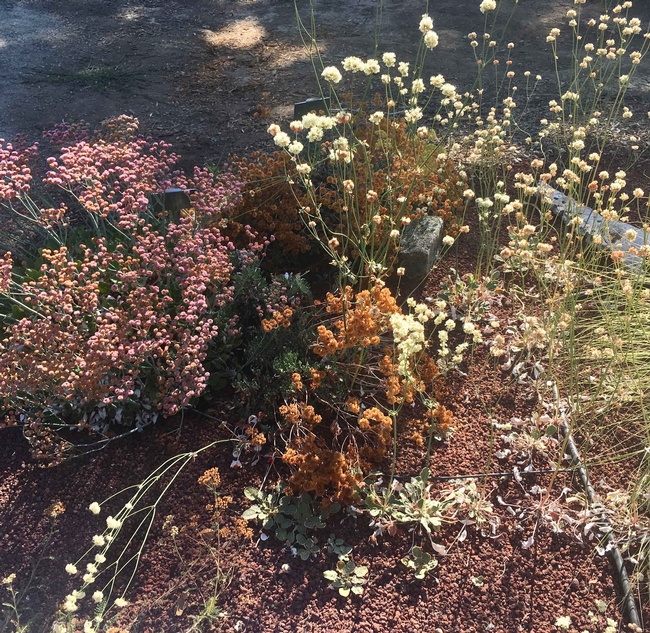An astounding number of species populate the wild buckwheat genus Eriogonum - over 250, according to the CALFLORA website. And, due to their propensity to hybridize, active speciation continues as we speak. There are species for almost every letter of the alphabet, from A (E. abertianum) to Z (E. zionis). 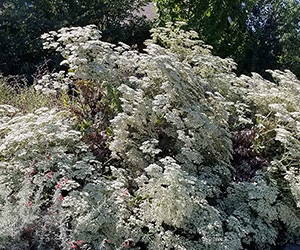
But first, let's address a common question: do the wild buckwheats native to North America supply the gluten-free buckwheat flour used in pancakes and other baked goods? The answer is no. Although young stems and leaves from our wild buckwheats were eaten by Native Americans, the buckwheat flour we bake with today is a product of the cultivated European common buckwheat, Fagopyrum esculentum. Both genera are in the same family, Polygonaceae. To further complicate matters, another plant in that family, Fallopia convolvulus or black-bindweed, is also called wild buckwheat. This is where taxonomic nomenclature is so very helpful in plant identification, if not always user friendly.
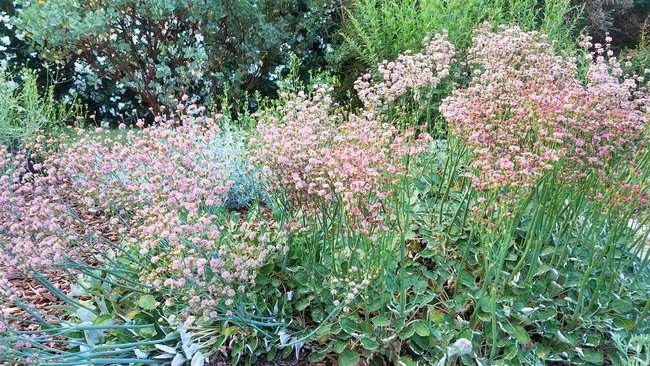
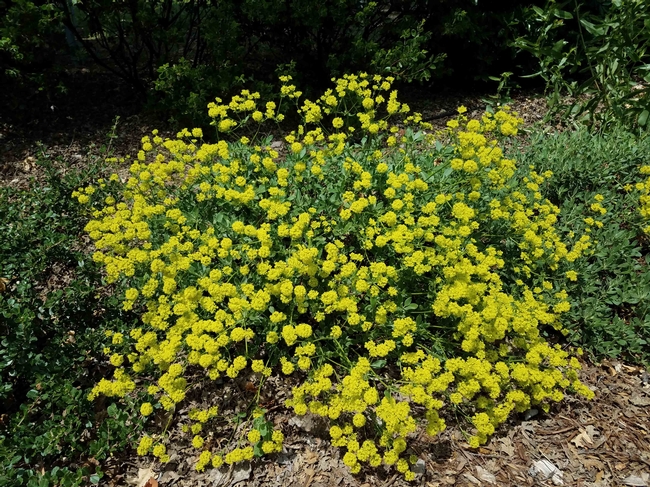
Not content to just colonize tough niches in our state, wild buckwheats provide crucial late summer food for pollinators. They continue to flower after other natives have become dormant to protect themselves from drought and heat. Jewell observes that buckwheats “reliably attract a whole symphony of pollinators including native bees, wasps, flies, butterflies, beetles, and birds.”
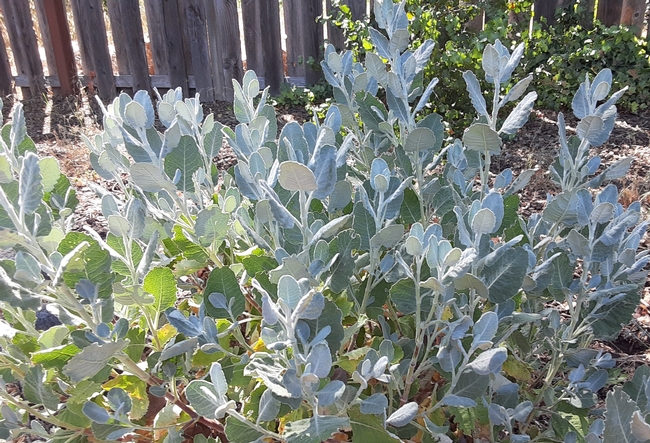
St. Catherine's Lace is one of the many buckwheat species that provide food to a wide variety of pollinators; it is also a beautiful landscape plant, especially for larger spaces. Its species name, giganteum, reveals its claim to fame; this is the largest of all the wild buckwheats, with the ability to grow up to ten feet high and wide. It prefers fast-draining rocky soil but will tolerate heavier clay soils if seldom watered and can also handle alkaline conditions. Although this species is native to California's Channel Islands, it easily adapts to summer temperatures in the Valley, and will withstand winter lows of 15 to 25 degrees F.
Depending on conditions, St. Catherine's lace can flower from May through August (one source claims it can bloom until December!). The bloom consists of large, dense, flat clusters made up of many small white or pinkish flowers which turn reddish-brown later in the season. The abundant flowers attract a variety of pollinators, including native bees, pollinator flies, wasps, and several species of butterflies. St. Catherine's Lace is what is known as a “honey plant” which means that honeybees collect its nectar for making honey. Finches and other migratory birds feast on its seeds in the fall. And large mature plants offer sheltering habitat to birds and lizards.
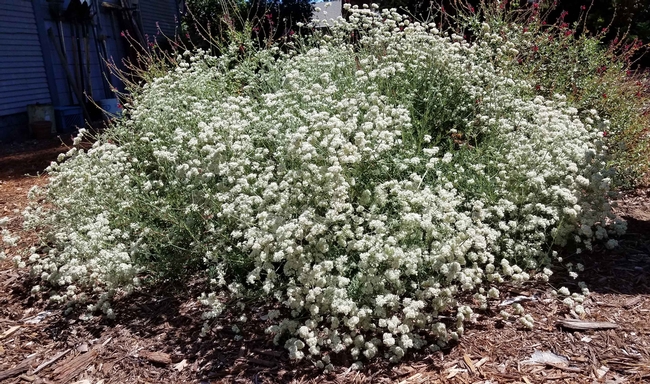
Endemic to the Channel Islands of Southern California, St. Catherine's Lace naturally populates Coastal sage and chaparral ecoregions. Three distinct species have developed on three of the eight Channel Islands: Santa Barbara Island buckwheat (var. compactum); San Clemente Island buckwheat (var. formosum); and Santa Catalina Island buckwheat (var. giganteum).
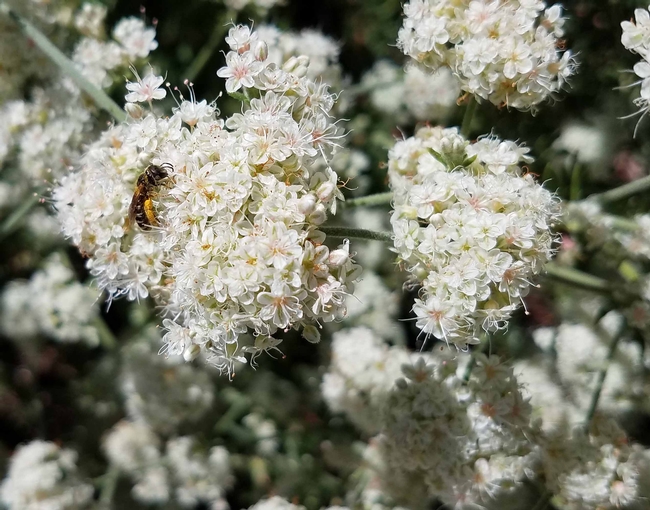
Each of the 256species in the genus Eriogonum offers its own version of habitat value and native beauty. Visit the CALFLORA website to view detailed photos of each of the wild buckwheats and decide which is your favorite.
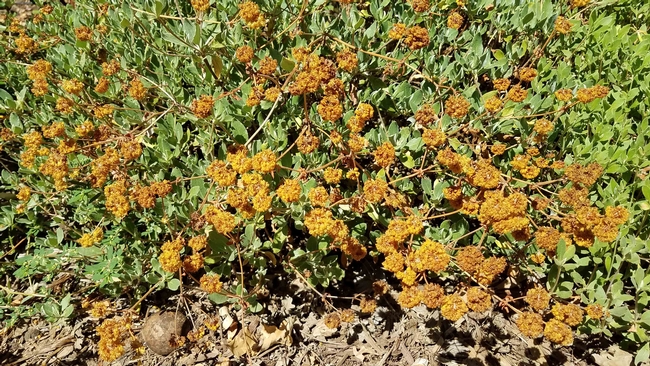
Jennifer Jewell, “Beneficial Buckwheats,” Pacific Horticulture Newsletter, April 2013
The UC Master Gardeners of Butte County are part of the University of California Cooperative Extension (UCCE) system. To learn more about us and our upcoming events, and for help with gardening in our area, visit our website. If you have a gardening question or problem, call the Hotline at (530) 538-7201 or email mgbutte@ucanr.edu.
Attached Images:
